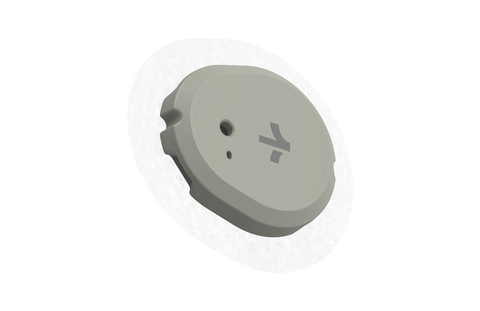FDA approves Dexcom’s Stelo, the first over-the-counter continuous glucose monitor

A photo of the Dexcom Stelo Glucose Biosensor System sensor that will be worn on the back of the upper arm. DEXCOM/Handout
April 14 (ZFJ) — The Food and Drug Administration cleared the Dexcom Stelo Glucose Biosensor System, the first continuous glucose monitor (CGM) approved for use without a prescription in America, for marketing on March 5.
Stelo is an integrated CGM (iCGM) intended for anyone 18 years and older who doesn’t use insulin, such as diabetic individuals treating their condition with oral medications or people without diabetes who want to see how diet and exercise impact their blood sugar levels.
“Use of CGM can help empower people with diabetes to understand the impact of different foods and activity on their glucose values,” said family physician Tamara Oser, M.D. “For people newly diagnosed with Type 2 diabetes or not taking insulin, these devices are often not covered by insurance and Stelo presents an opportunity to provide valuable information that can impact their diabetes management.”
Stelo is not for patients with problematic hypoglycemia (low blood sugar) because it’s not designed to alert them to the condition. It
“CGMs can be a powerful tool to help monitor blood glucose. Today’s clearance expands access to these devices by allowing individuals to purchase a CGM without the involvement of a health care provider,” said Jeff Shuren, M.D., J.D., director of the FDA’s Center for Devices and Radiological Health. “Giving more individuals valuable information about their health, regardless of their access to a doctor or health insurance, is an important step forward in advancing health equity for U.S. patients.”
Stelo uses a small sensor worn on the back of the upper arm and phone application to continuously measure, record, analyze, and display blood sugar levels. It presents blood glucose measurements and trends every 15 minutes in the app.
Each sensor can be worn for up to 15 days before it needs to be replaced.
The FDA approved Stelo after it saw clinical trial data that showed that it performed similarly to other iCGMs. Adverse events reported in the study include local infection, skin irritation, and pain or discomfort.
According to the latest data in the Centers for Disease Control and Prevention’s National Diabetes Statistics Report, 38.4 million Americans have diabetes (11.6% of the U.S. population) and 97.6 million Americans 18 years or older have prediabetes (38.0% of the adult U.S. population).
Stelo will be available for purchase online without a prescription starting summer 2024.
Users should not make medical decisions based on the device’s data without first consulting their medical provider.
References
- U.S. Food and Drug Administration - FDA Clears First Over-the-Counter Continuous Glucose Monitor - https://www.fda.gov/news-events/press-announcements/fda-clears-first-over-counter-continuous-glucose-monitor (ARCHIVE)
- Dexcom - Stelo by Dexcom First Glucose Biosensor Cleared by FDA as Over-the-Counter - https://investors.dexcom.com/news/news-details/2024/Stelo-by-Dexcom-First-Glucose-Biosensor-to-be-Cleared-by-FDA-as-Over-the-Counter/default.aspx (ARCHIVE)
- Dexcom - stelo - https://www.dexcom.com/en-us/stelo (ARCHIVE)
